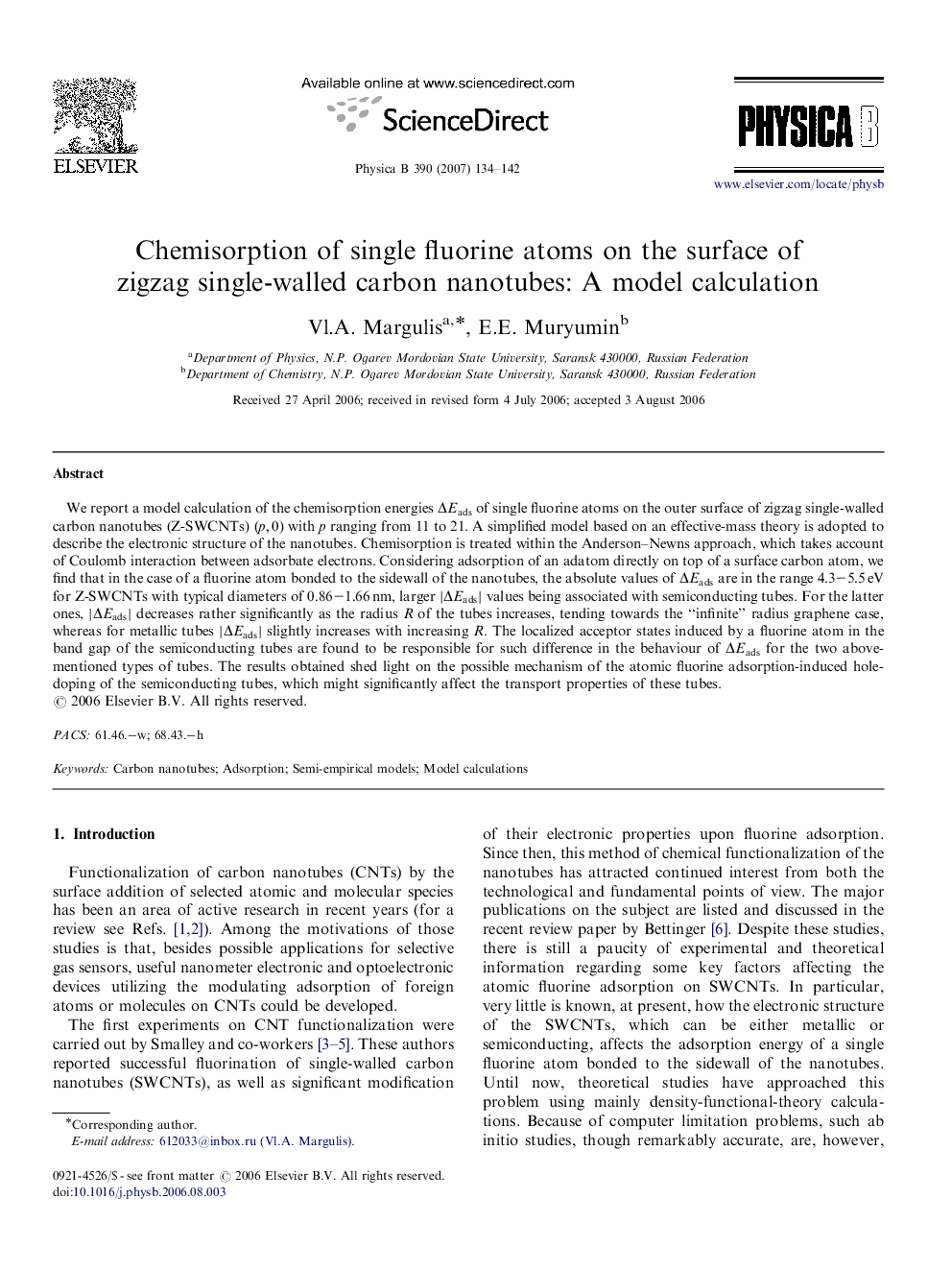| Article ID | Journal | Published Year | Pages | File Type |
|---|---|---|---|---|
| 1816034 | Physica B: Condensed Matter | 2007 | 9 Pages |
Abstract
We report a model calculation of the chemisorption energies ÎEads of single fluorine atoms on the outer surface of zigzag single-walled carbon nanotubes (Z-SWCNTs) (p,0) with p ranging from 11 to 21. A simplified model based on an effective-mass theory is adopted to describe the electronic structure of the nanotubes. Chemisorption is treated within the Anderson-Newns approach, which takes account of Coulomb interaction between adsorbate electrons. Considering adsorption of an adatom directly on top of a surface carbon atom, we find that in the case of a fluorine atom bonded to the sidewall of the nanotubes, the absolute values of ÎEads are in the range 4.3-5.5eV for Z-SWCNTs with typical diameters of 0.86-1.66nm, larger |ÎEads| values being associated with semiconducting tubes. For the latter ones, |ÎEads| decreases rather significantly as the radius R of the tubes increases, tending towards the “infinite” radius graphene case, whereas for metallic tubes |ÎEads| slightly increases with increasing R. The localized acceptor states induced by a fluorine atom in the band gap of the semiconducting tubes are found to be responsible for such difference in the behaviour of ÎEads for the two above-mentioned types of tubes. The results obtained shed light on the possible mechanism of the atomic fluorine adsorption-induced hole-doping of the semiconducting tubes, which might significantly affect the transport properties of these tubes.
Related Topics
Physical Sciences and Engineering
Physics and Astronomy
Condensed Matter Physics
Authors
Vl.A. Margulis, E.E. Muryumin,
